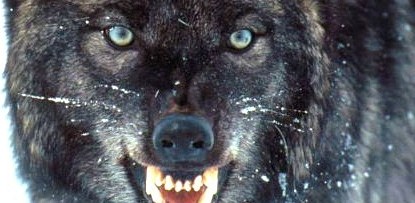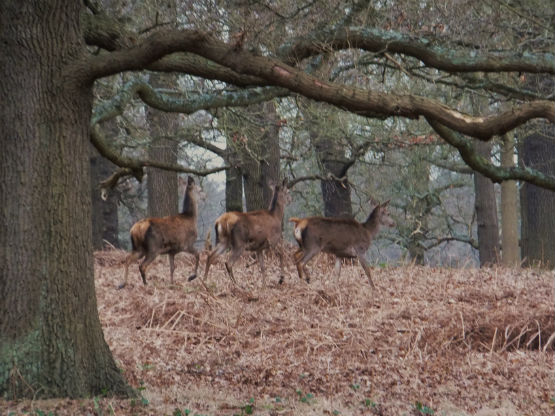With the increase and spread of wolves across much of Europe Peter Jones considers the viability of reintroducing the Wolf to UK shores and the likely effect on the UK's Deer population.
From time to time stories arise concerning the reintroduction of wolves into the UK. These stories usually relate to a suggested means of controlling the UK’s increasing Deer population.

(Above: Wolves - a solution to the requirements of Deer Management?)
This is particularly true in Scotland which remains one of Europe’s last remaining wildernesses and many argue is at the limits of its carrying capacity for Red Deer.
More recently increasing numbers of wolves (Canis Lupus) are now reported to be spreading across much of Europe, with the first Wolf recorded since 1904 being found recently in Holland.
So what of Wolves in the UK? Here previous media attention has surrounded wealthy entrepreneurs such as Paul Lister who’s attempts to introduce the Wolf to Scotland have been part of an overall conservation effort undertaken within large enclosures.
At Mr Lister’s Alladale Estate in Sutherland, Scotland he had proposed to introduce two packs of wolves to the 23,000 acres estate, which he has had fenced in an attempt to also restore much of Scotland’s lost flora and fauna.

(Above: Red Deer are thought to have been the main prey of Wolves in the UK)
The fact is, Wolves used to be common place in much of the UK until around the 13th Century, and inhabited areas around Wales and Northumbria in large numbers. It wasn’t until the 13th Century that a sustained campaign to eliminate them was instigated by King Edward I (1272 - 1307) in an attempt to protect growing numbers of livestock.
Edward l ordered the total extermination of all wolves in his kingdom and by the reign of Henry VII in 1485 it is thought that Wolves were pretty much extinct in England and Wales.
Scotland it seems was inhabited by Wolves for very much longer. Records vary with some claiming that it wasn’t until 1680 in Perthshire that the last Scottish wolf was thought to have been killed. Other records claim sightings as late as 1769 and still others indicate that the Wolf may have in fact been at large in Scotland until as late as 1888. With such vast areas of wilderness it is difficult to be certain.
The extinction of the Wolf has of course not been the only reason for the rise and sometimes decline in deer numbers. A huge influence has been the degree of forestation which has unsurprisingly been in tune with times of industrialisation and war. Whatever the reason we can be sure that man has been the catalyst, and addressing this imbalance should be carefully considered.
One of the most balanced studies into the sustainability of Wolves in Scotland has been carried out by ‘The Royal Society for Biological Sciences’ (RSBS) (2007). By applying the Markov predator – prey model the society was able to predict the effect of Wolves on red deer and the subsequent increases and decline in numbers of both species when left to roam wild.
According to the RSBS the initial effect of releasing wolves would result in a decline in red deer numbers and a spike in Wolf numbers. This is followed by a subsequent decline in Wolf numbers, before both species reach a natural equilibrium that is currently in line with existing populations in Europe and further afield.
The study also concerns itself with public perception. There has of course been considerable fear surrounding wolves and their potential to attack humans. Whilst incidents are rare they do exist. Fairly recently Kenton Carnegie age 22 was found killed in the woods of northern Canada, where up to 60,000 wolves exist in the wild. Carnegie had apparently gone for a walk but failed to return to his camp, he is thought to have fallen victim to an attack by wolves.
These concerns however appear to be mainly the preserve of Urbanites, 35% of whom sited this fear as their chief concern. Rural dwellers appeared more concerned by the effect of the wolf on livestock with 54% of respondents pointing to this as their number one concern (RSBS 2007).
Before making your own judgement it is sobering to remind ourselves that Wolves in the UK were thought to have grown to weights of around 150lbs! Do we really want such beasts set loose in Britain’s green and pleasant lands? It seems that the media already has enough to say about the dangers of the urban fox which weighs a tenth of this huge apex predator!
Whatever your view on the introduction of Wolves, it seems that the overriding viability of Wolves in the UK is dependent on the degree of Deer Culling. With the RSBS sitting this as the variable which would have most effect on the sustainability of wolf packs in Scotland.
The Society concludes that high levels of deer culling by man would undoubtedly cause the Wolf to again become extinct on UK shores, however with a just a minimal level of Deer Culling it is just plausible that the long since extinct balance of large herbivore and carnivore in the UK could once again be restored.
Click on this link to read more Articles about Deer Stalking: countydeerstalking



















